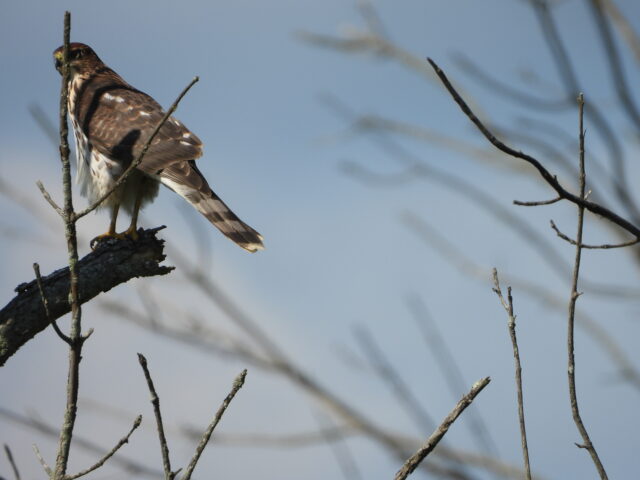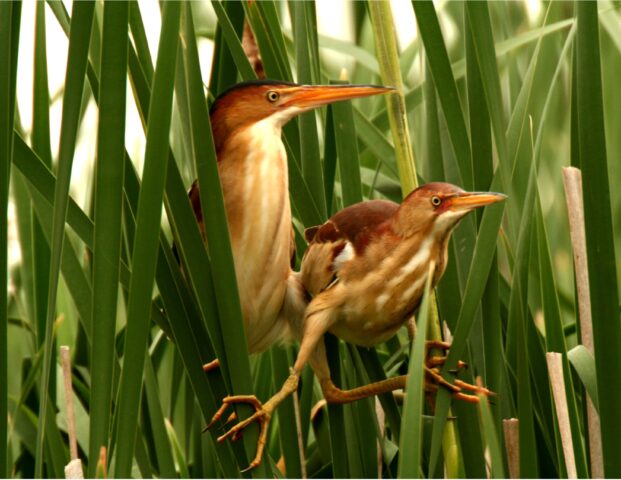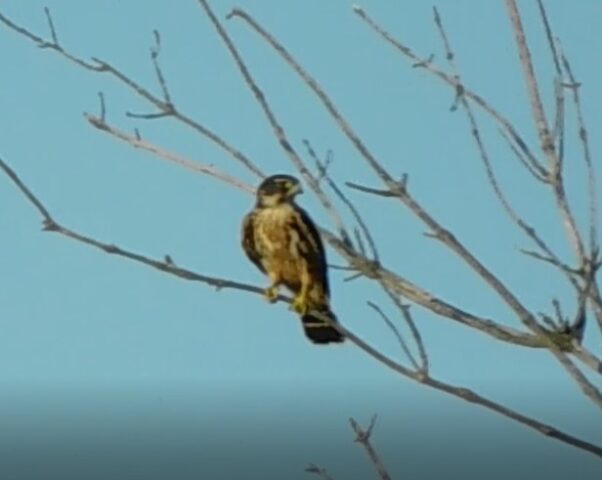
This juvenile goshawk has been observed many times following one of the parent birds as he learns to hunt. They fly on an east-west pattern along the edge of the wetland hunting for weak or injured birds. Northern goshawks are listed on the Michigan Endangered Species List as “threatened”.

Least bittern nest in the wetland sanctuary most years, but hide well among the cattails and other vegetation. This photo was taken by Clay Wilton who volunteered with us through CMU Wildlife Society volunteers. Least bittern are listed as “threatened” on Michigan’s Endangered Species List.

Peregrine falcons were often observed on Little Swamp Sanctuary in 2022, diving on ducks and speeding through the wetland edge. Two juvenile birds followed the parent birds as they learned to hunt their prey. Peregrine falcons were close to extinction, but are beginning to return to good habitat. They are known for nesting on tall cliffs, but will also choose abandoned eagle nests and hollow trees. Peregrines are currently listed on Michigan’s Endangered Species List as “threatened”. Photo by Barb Rogers from The Hide.